-
 Bitcoin
Bitcoin $108,017.2353
-0.81% -
 Ethereum
Ethereum $2,512.4118
-1.58% -
 Tether USDt
Tether USDt $1.0002
-0.03% -
 XRP
XRP $2.2174
-1.03% -
 BNB
BNB $654.8304
-0.79% -
 Solana
Solana $147.9384
-1.76% -
 USDC
USDC $1.0000
-0.01% -
 TRON
TRON $0.2841
-0.76% -
 Dogecoin
Dogecoin $0.1636
-2.09% -
 Cardano
Cardano $0.5726
-1.72% -
 Hyperliquid
Hyperliquid $39.1934
1.09% -
 Sui
Sui $2.9091
-0.59% -
 Bitcoin Cash
Bitcoin Cash $482.1305
0.00% -
 Chainlink
Chainlink $13.1729
-1.54% -
 UNUS SED LEO
UNUS SED LEO $9.0243
-0.18% -
 Avalanche
Avalanche $17.8018
-1.90% -
 Stellar
Stellar $0.2363
-1.69% -
 Toncoin
Toncoin $2.7388
-3.03% -
 Shiba Inu
Shiba Inu $0.0...01141
-1.71% -
 Litecoin
Litecoin $86.3646
-1.98% -
 Hedera
Hedera $0.1546
-0.80% -
 Monero
Monero $311.8554
-1.96% -
 Dai
Dai $1.0000
-0.01% -
 Polkadot
Polkadot $3.3473
-2.69% -
 Ethena USDe
Ethena USDe $1.0001
-0.01% -
 Bitget Token
Bitget Token $4.3982
-1.56% -
 Uniswap
Uniswap $6.9541
-5.35% -
 Aave
Aave $271.7716
0.96% -
 Pepe
Pepe $0.0...09662
-1.44% -
 Pi
Pi $0.4609
-4.93%
Using the DMI (Directional Movement Index) and ADX for Bitcoin trend strength
The DMI and ADX help Bitcoin traders identify trend direction and strength, with +DI/-DI crossovers signaling potential moves and ADX above 25 confirming strong trends.
Jul 05, 2025 at 07:17 pm
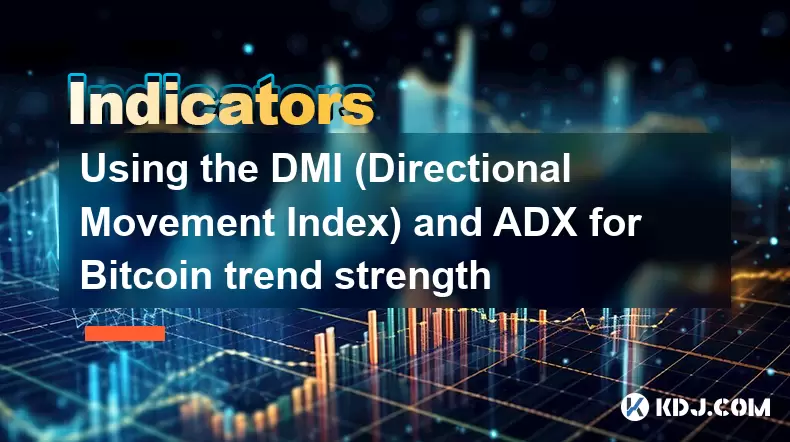
Understanding the DMI and ADX in Cryptocurrency Trading
In the world of cryptocurrency trading, particularly with Bitcoin, traders often rely on technical indicators to assess market trends and momentum. Two such indicators that are widely used are the Directional Movement Index (DMI) and the Average Directional Index (ADX). These tools help determine both the direction and strength of a trend, which is crucial when dealing with the volatile nature of Bitcoin.
The DMI consists of two lines: +DI (Positive Directional Indicator) and -DI (Negative Directional Indicator). Together, these lines help identify whether an asset like Bitcoin is trending upward or downward. The ADX, derived from the DMI, measures the strength of the trend regardless of its direction. A higher ADX value indicates a stronger trend.
How to Calculate the DMI and ADX for Bitcoin
To effectively use these indicators, it's important to understand how they are calculated:
- First, calculate the +DM (Positive Directional Movement) and -DM (Negative Directional Movement) for each period.
- Then, smooth these values using a specific lookback period, typically 14 days.
- Divide the smoothed DM values by the Average True Range (ATR) to normalize them into +DI and -DI.
- Use these DI values to compute the DX (Directional Movement Index).
- Finally, smooth the DX over the same period to obtain the ADX.
When applied to Bitcoin, this calculation can be done using most modern charting platforms such as TradingView, Binance, or CoinMarketCap Pro. These platforms automatically handle the complex math behind the scenes, allowing traders to focus on interpretation rather than manual computation.
Interpreting DMI Crossovers in Bitcoin Charts
One of the most common strategies involving the DMI is watching for crossovers between the +DI and -DI lines:
- When +DI crosses above -DI, it may signal the start of a bullish trend.
- Conversely, when -DI crosses above +DI, it could indicate a bearish trend.
These signals become more reliable when combined with other forms of analysis. For example, if Bitcoin breaks out of a consolidation phase and the +DI crosses above -DI, it might confirm a strong upward move. However, false signals can occur, especially during sideways markets or sudden volatility spikes. That’s where the ADX comes in handy — it helps filter out weak signals.
Using ADX to Measure Trend Strength in Bitcoin
The ADX line ranges from 0 to 100, with values indicating the strength of the trend:
- An ADX reading below 25 suggests a weak or non-trending market.
- An ADX above 25 indicates a strong trend, either up or down.
- As the ADX rises beyond 40 or even 50, it shows increasing momentum in the current direction.
For Bitcoin, which frequently experiences sharp moves followed by consolidation phases, the ADX becomes a critical tool for distinguishing between real trends and noise. Traders can avoid entering positions during low ADX periods, focusing instead on times when the trend has enough strength to justify a trade.
It's also useful to observe the rate at which ADX rises. A rapidly increasing ADX suggests accelerating momentum, while a flattening ADX may signal a potential reversal or exhaustion.
Combining DMI and ADX for Bitcoin Trading Signals
Using the DMI and ADX together provides a more comprehensive view of the market. Here’s how to combine them effectively:
- Look for crossovers in DMI lines to determine trend direction.
- Confirm the crossover with ADX readings above 25 to ensure the trend has strength.
- Avoid taking trades based solely on DMI crossovers when ADX is below 20, as those may lead to whipsaws or false breakouts.
For instance, if Bitcoin is in an uptrend and the +DI crosses above -DI, but the ADX is declining, this could mean the trend is losing steam. On the contrary, if both +DI crosses above -DI and ADX is rising, it gives a stronger case for entering a long position.
Some traders also use dynamic filters such as moving averages or volume indicators alongside DMI and ADX to further refine their strategy.
Common Pitfalls When Using DMI and ADX for Bitcoin
Despite their usefulness, there are several pitfalls traders should be aware of:
- Lagging nature: Both DMI and ADX are lagging indicators, meaning they react to price movements rather than predict them. In fast-moving crypto markets like Bitcoin, this delay can cause missed entries or late exits.
- False signals in choppy markets: During consolidation or range-bound conditions, the DMI may generate multiple crossovers without a clear trend forming.
- Overreliance on thresholds: Simply using 25 as a cutoff for ADX can sometimes lead to premature exits or entries. It's better to analyze the context of the entire chart and not just isolated values.
To mitigate these issues, traders should always combine DMI and ADX with other tools such as support/resistance levels, volume profiles, or price action patterns.
Frequently Asked Questions
What time frame is best for using DMI and ADX with Bitcoin?
While the default setting is 14 periods, many traders adjust it depending on their strategy. Short-term traders may use 5-minute or 1-hour charts with shorter periods (e.g., 7), while swing traders often stick to daily charts with the standard 14-period setting.
Can DMI and ADX be used for altcoins too?
Yes, the principles apply to any tradable asset including altcoins. However, due to lower liquidity and higher volatility in some altcoin markets, signals may be less reliable compared to Bitcoin.
Is it possible to automate trading using DMI and ADX?
Absolutely. Many algorithmic trading platforms allow integration of these indicators into bots. However, backtesting is essential before live deployment to ensure robustness across different market conditions.
Do DMI and ADX work well in bear markets?
They perform well in strong directional moves regardless of whether the market is bullish or bearish. In a bear market, the -DI crossing above +DI combined with rising ADX can offer high-probability shorting opportunities.
Disclaimer:info@kdj.com
The information provided is not trading advice. kdj.com does not assume any responsibility for any investments made based on the information provided in this article. Cryptocurrencies are highly volatile and it is highly recommended that you invest with caution after thorough research!
If you believe that the content used on this website infringes your copyright, please contact us immediately (info@kdj.com) and we will delete it promptly.
- Cryptos in July 2025: Massive Gains or Just Hype?
- 2025-07-05 20:30:13
- Pepe's EVM Layer 2 Meme Coin Mania: What's the Hype?
- 2025-07-05 20:50:12
- Shiba Inu, Dogecoin, and the Crypto Skyrocket: What's Making These Memes Soar?
- 2025-07-05 21:10:12
- Tokenized Stocks: Robinhood, Gemini, and the NYSE Threat
- 2025-07-05 21:10:12
- Altcoin Adventures: Navigating the Pepe Fork Frenzy and Solana's Summer Swings
- 2025-07-05 21:15:12
- Hong Kong's Tokenised Bond Leap: Zero Stamp Duty Sparks Web3 Ambitions
- 2025-07-05 20:30:13
Related knowledge

How to set up a moving average crossover alert for Dogecoin
Jul 05,2025 at 07:33pm
Understanding Moving Averages and Their Relevance to DogecoinMoving averages (MAs) are among the most commonly used technical indicators in cryptocurrency trading. They help smooth out price data over a specific time period, offering traders a clearer view of trends. Dogecoin, being a highly volatile altcoin, often exhibits strong momentum when certain ...
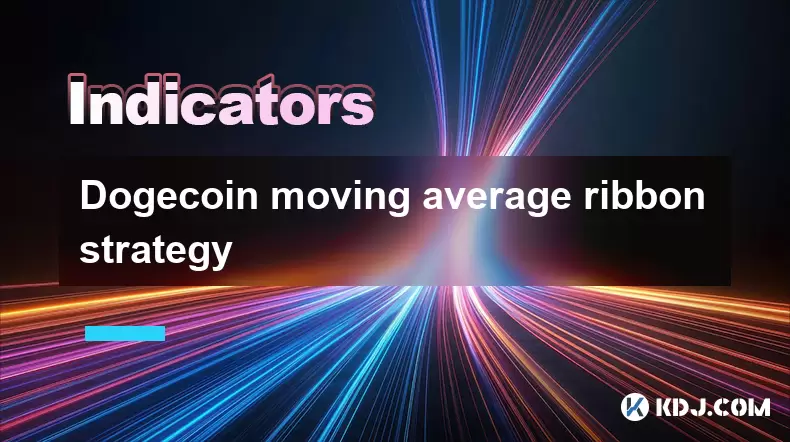
Dogecoin moving average ribbon strategy
Jul 05,2025 at 07:32pm
What is the Dogecoin Moving Average Ribbon Strategy?The Dogecoin moving average ribbon strategy is a technical analysis approach used by traders to identify potential trends and reversals in the price of DOGE. This method involves plotting multiple moving averages (MAs) on a price chart, typically of varying lengths, which visually form a 'ribbon' when ...
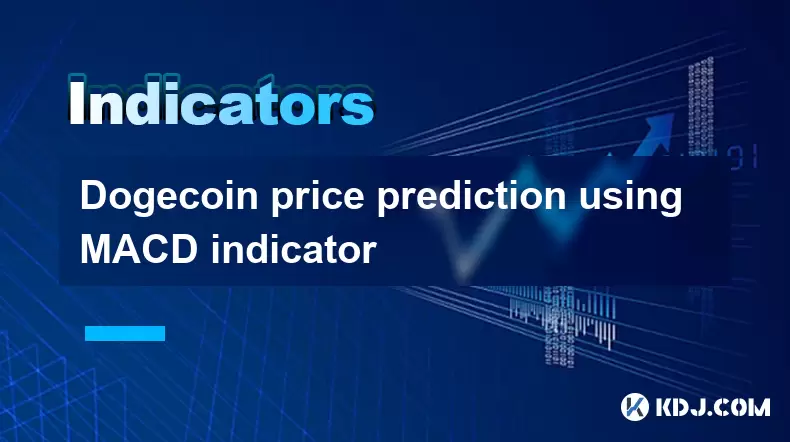
Dogecoin price prediction using MACD indicator
Jul 05,2025 at 07:18pm
Understanding the MACD Indicator in Cryptocurrency TradingThe Moving Average Convergence Divergence (MACD) is a popular technical analysis tool used by traders to identify potential price trends and reversals. It consists of three main components: the MACD line, the signal line, and the MACD histogram. The MACD line is calculated by subtracting the 26-p...

Using trend lines and moving averages together for Dogecoin
Jul 05,2025 at 07:16pm
Understanding Trend Lines in Cryptocurrency TradingTrend lines are essential tools for analyzing price movements in the cryptocurrency market. In Dogecoin trading, trend lines help identify potential support and resistance levels by connecting significant price points on a chart. When applied correctly, these lines can indicate whether the asset is in a...
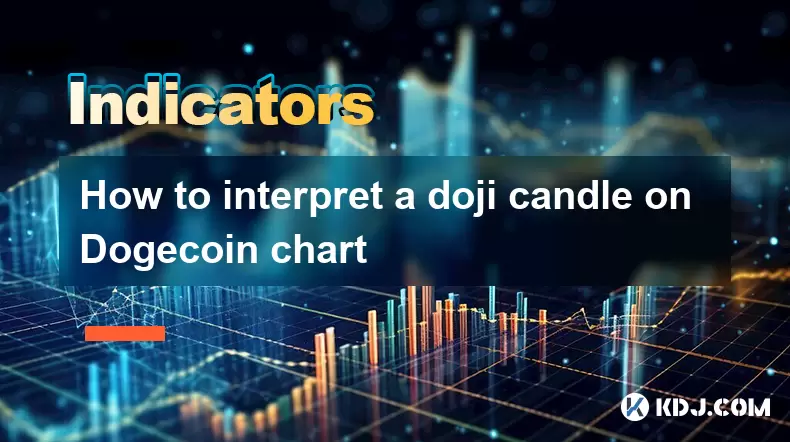
How to interpret a doji candle on Dogecoin chart
Jul 05,2025 at 07:49pm
Understanding the Doji Candlestick PatternA doji candle is a crucial technical indicator in cryptocurrency trading, especially when analyzing assets like Dogecoin. It represents market indecision and often signals potential reversals or continuation patterns. A doji forms when the opening and closing prices of an asset are nearly identical, resulting in...
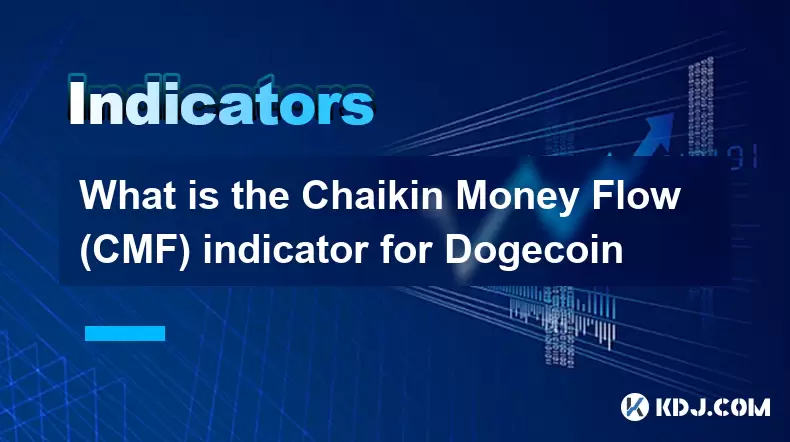
What is the Chaikin Money Flow (CMF) indicator for Dogecoin
Jul 05,2025 at 07:32pm
Understanding the Chaikin Money Flow (CMF) IndicatorThe Chaikin Money Flow (CMF) is a technical analysis indicator developed by Marc Chaikin to measure the accumulation and distribution of a financial asset over a specific period. It combines both price and volume data to assess whether institutional investors are actively buying or selling an asset. In...

How to set up a moving average crossover alert for Dogecoin
Jul 05,2025 at 07:33pm
Understanding Moving Averages and Their Relevance to DogecoinMoving averages (MAs) are among the most commonly used technical indicators in cryptocurrency trading. They help smooth out price data over a specific time period, offering traders a clearer view of trends. Dogecoin, being a highly volatile altcoin, often exhibits strong momentum when certain ...

Dogecoin moving average ribbon strategy
Jul 05,2025 at 07:32pm
What is the Dogecoin Moving Average Ribbon Strategy?The Dogecoin moving average ribbon strategy is a technical analysis approach used by traders to identify potential trends and reversals in the price of DOGE. This method involves plotting multiple moving averages (MAs) on a price chart, typically of varying lengths, which visually form a 'ribbon' when ...

Dogecoin price prediction using MACD indicator
Jul 05,2025 at 07:18pm
Understanding the MACD Indicator in Cryptocurrency TradingThe Moving Average Convergence Divergence (MACD) is a popular technical analysis tool used by traders to identify potential price trends and reversals. It consists of three main components: the MACD line, the signal line, and the MACD histogram. The MACD line is calculated by subtracting the 26-p...

Using trend lines and moving averages together for Dogecoin
Jul 05,2025 at 07:16pm
Understanding Trend Lines in Cryptocurrency TradingTrend lines are essential tools for analyzing price movements in the cryptocurrency market. In Dogecoin trading, trend lines help identify potential support and resistance levels by connecting significant price points on a chart. When applied correctly, these lines can indicate whether the asset is in a...

How to interpret a doji candle on Dogecoin chart
Jul 05,2025 at 07:49pm
Understanding the Doji Candlestick PatternA doji candle is a crucial technical indicator in cryptocurrency trading, especially when analyzing assets like Dogecoin. It represents market indecision and often signals potential reversals or continuation patterns. A doji forms when the opening and closing prices of an asset are nearly identical, resulting in...

What is the Chaikin Money Flow (CMF) indicator for Dogecoin
Jul 05,2025 at 07:32pm
Understanding the Chaikin Money Flow (CMF) IndicatorThe Chaikin Money Flow (CMF) is a technical analysis indicator developed by Marc Chaikin to measure the accumulation and distribution of a financial asset over a specific period. It combines both price and volume data to assess whether institutional investors are actively buying or selling an asset. In...
See all articles

























































































